Trip to Quakertown
On Friday, I made a trip to Quakertown, PA which is about 33 miles away from the Yardley, PA area.
Executive Summary
T-Mobile had the best average download speeds throughout the trip (206 Mbps). AT&T was around 88 Mbps and Verizon at 41 Mbps.
The addition of new band 5 sites has helped Verizon with better quality in some areas.
T-Mobile still has the best RAN (a lot of green RSRQ) and more nodes (this is mostly due to addition of N41/N71 only sites). They use carrier aggregation the most. They are about the same as Verizon in regards to 5G availability (counting either NSA or SA) at around 50%.
Description of Travel
Route 332 West through Newtown and then got on Swamp Road to Rushland Road/Almshouse Road to 611 and then 313 West
Went through the towns of Jamison, Doylestown (County Seat of Bucks County), Furlong, Dublin to my final destination of Quakertown.
Map of Areas Travelled

I'm assuming these areas are still considered suburbs to Philadelphia but there a lots of winding backroads and farmland along the way. Coverage and performance with the three carriers was relatively good for the whole trip.
Verizon
RSRP
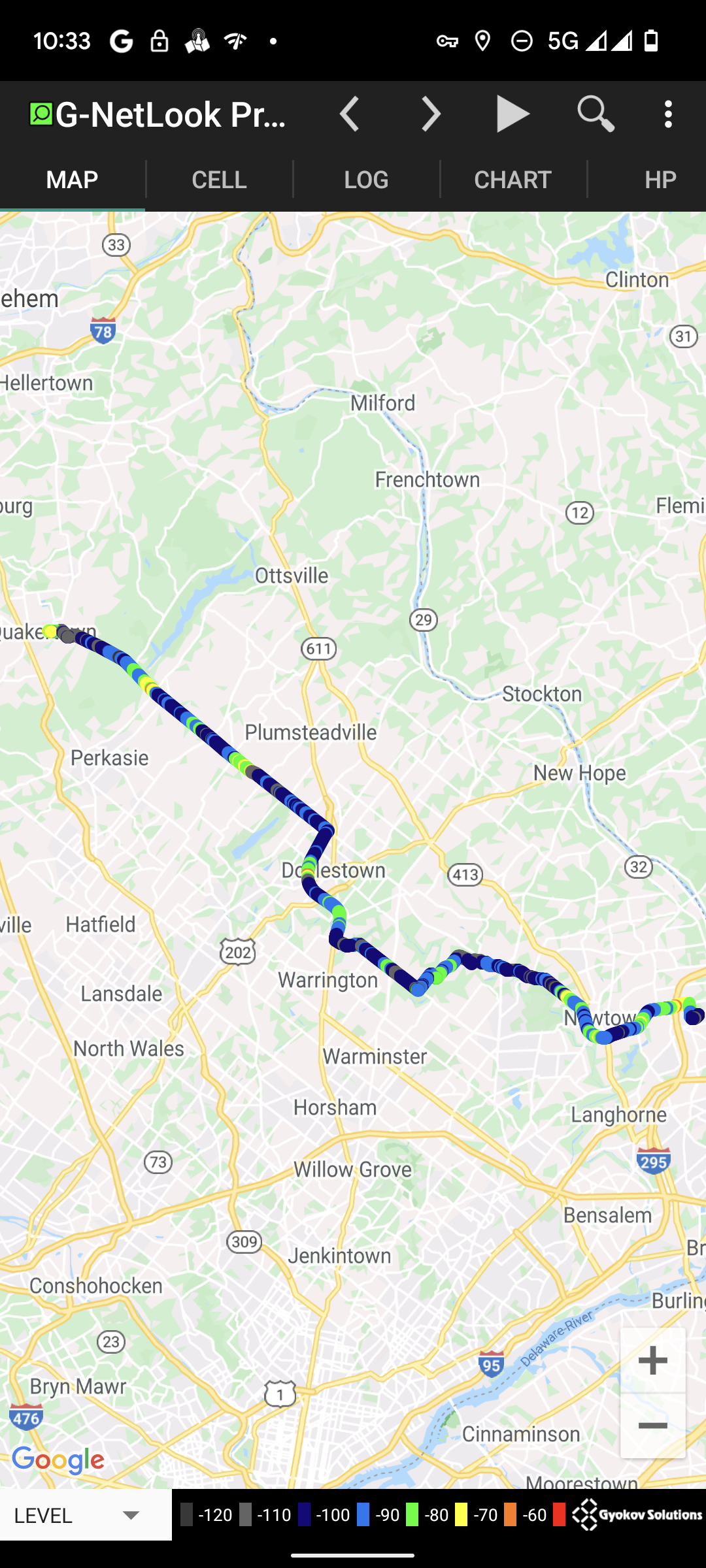
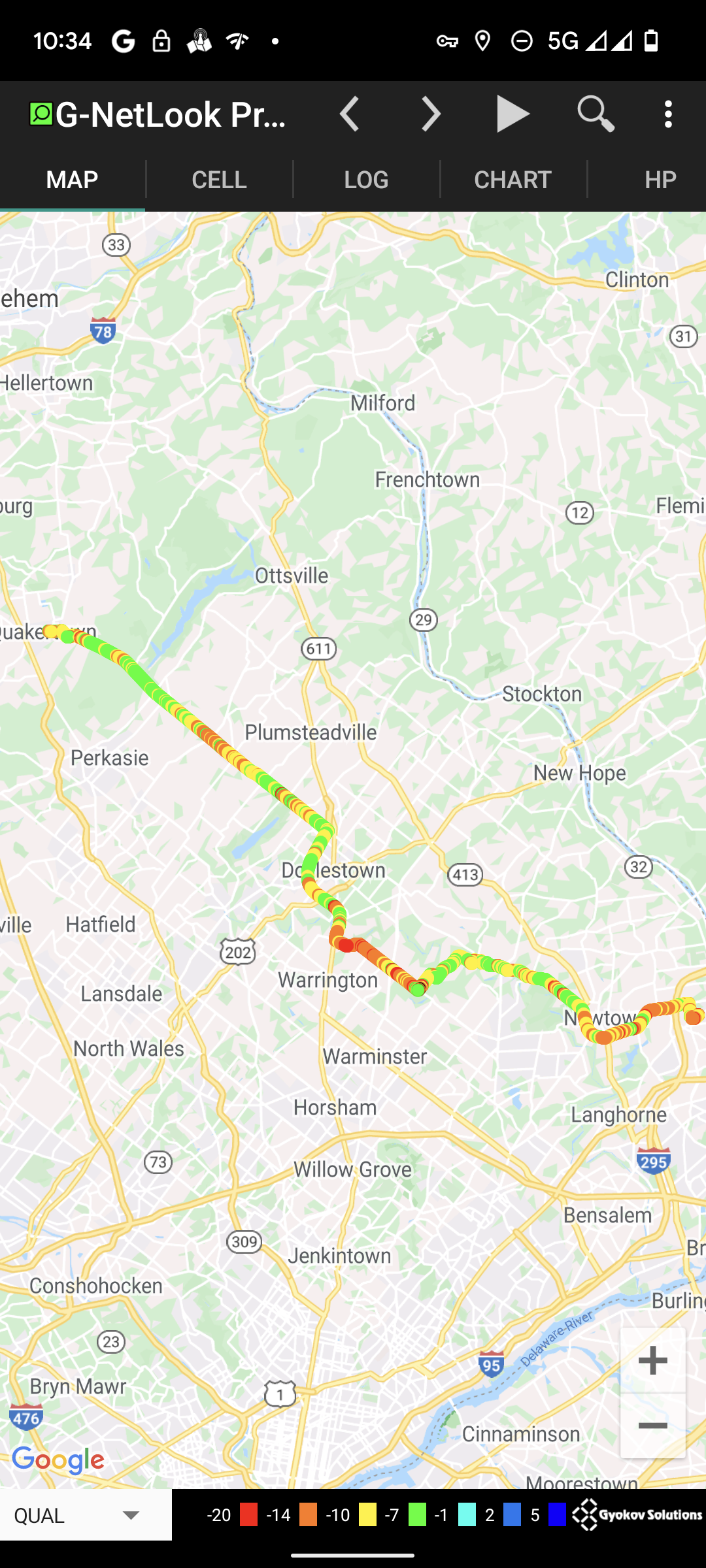
Download Speeds (41.166 Mbps Average)
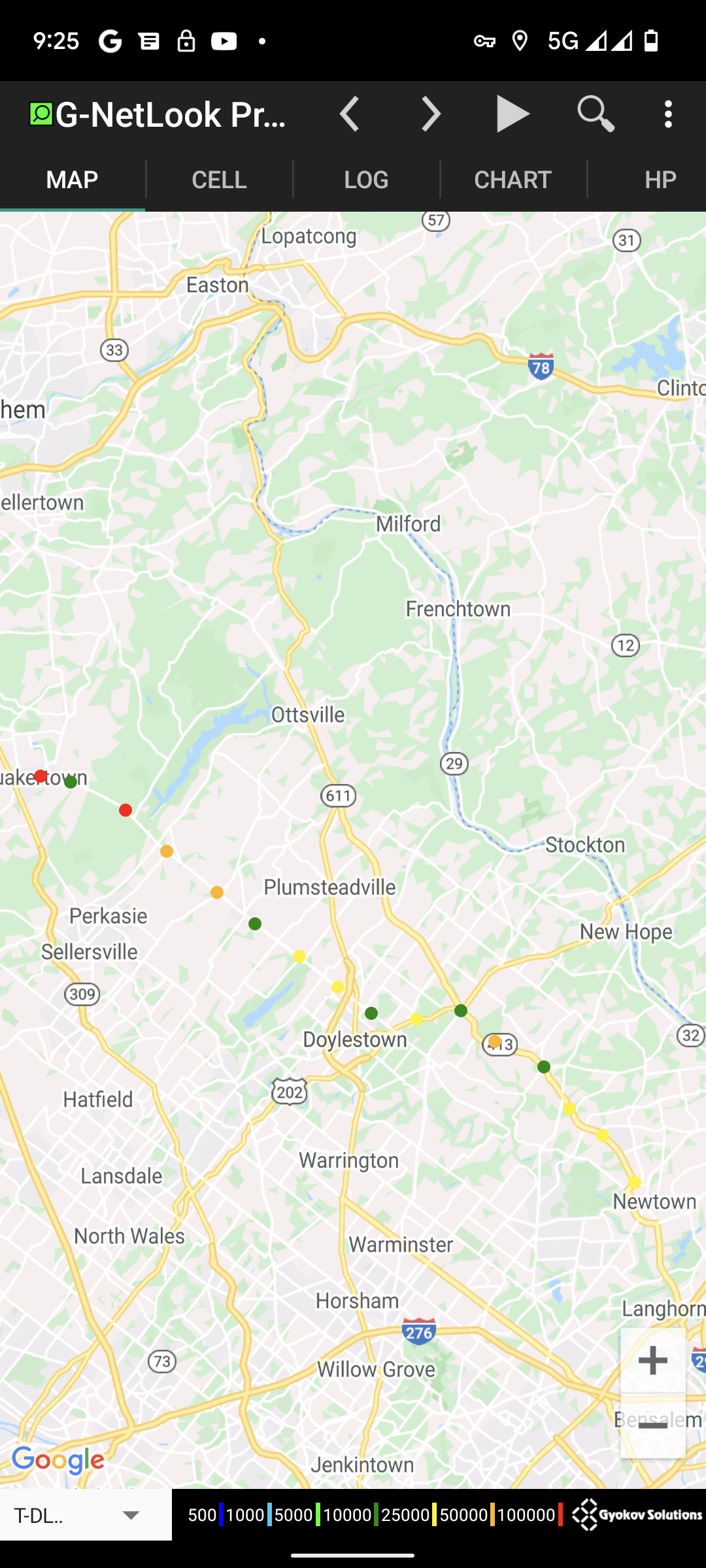
Bands (Some N5 being interpreted incorrectly I believe so possibly more LTE band 5)

Bandwidth
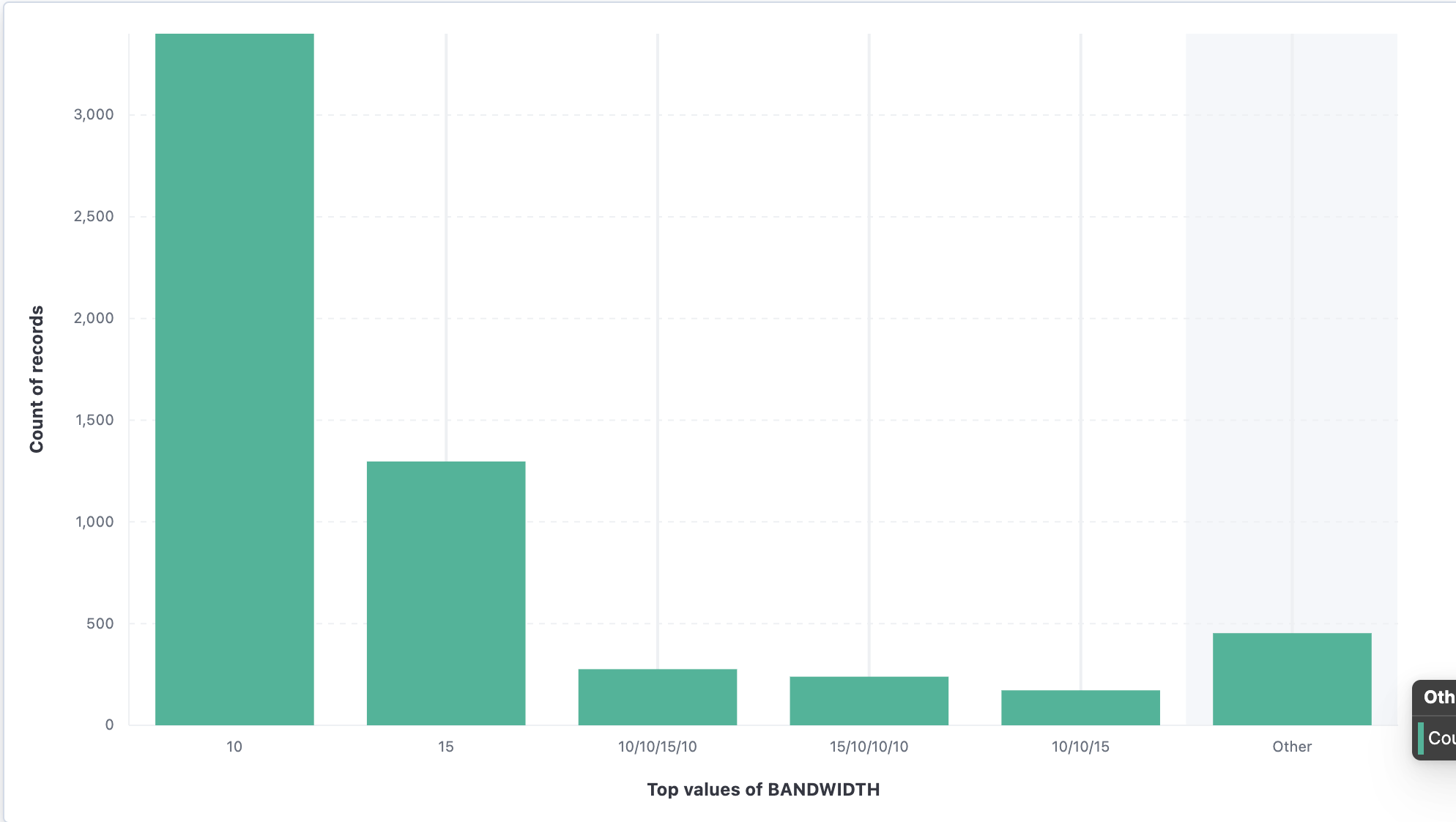
5G Coverage (Approximately 50% of time)
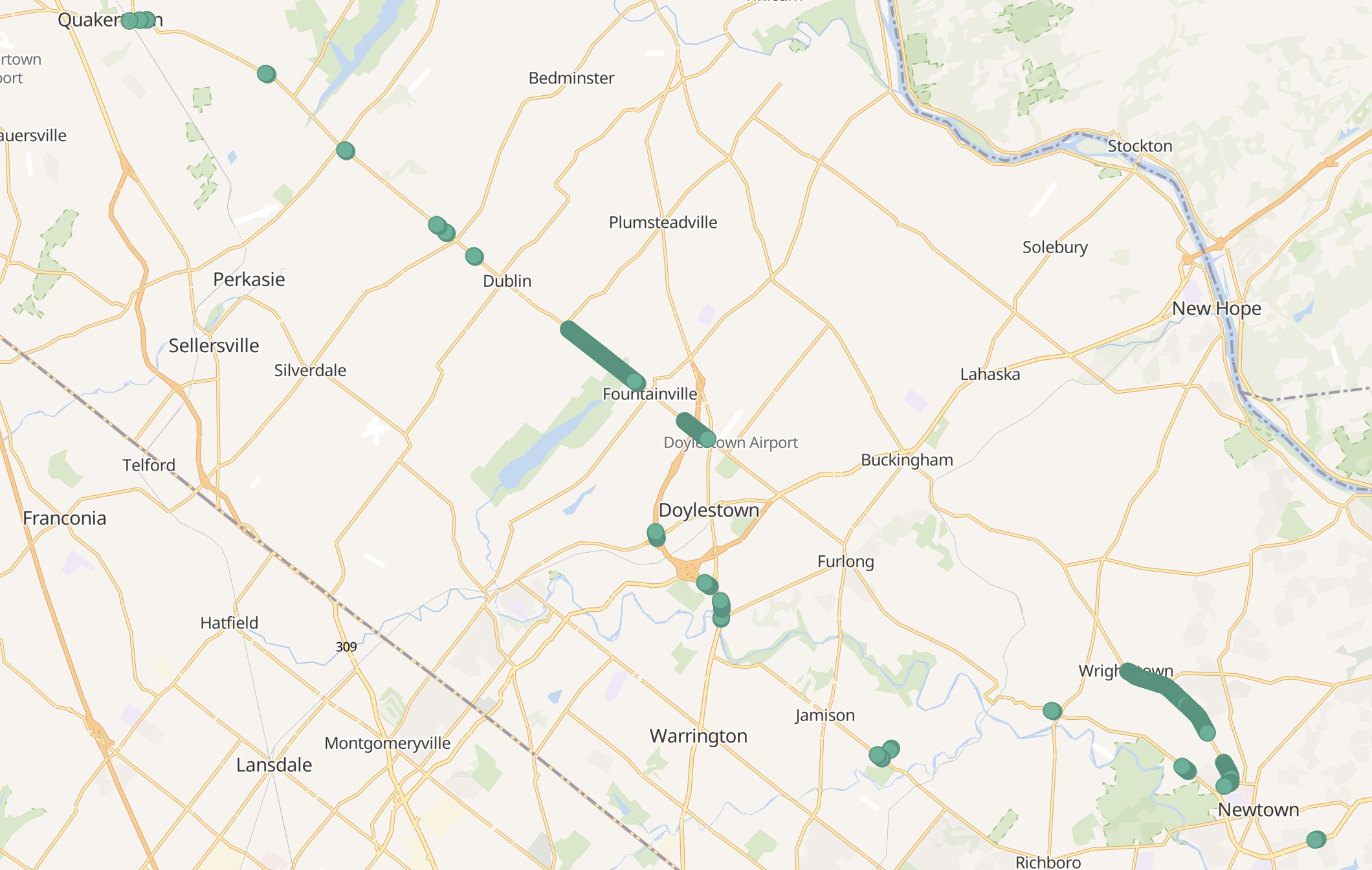
Other Metrics
Average RSRQ: -9.131
Average RSRP: -99.493
Unique Nodes: 22
Unique Cells: 54
Average Ping Time : Approximately 50ms
Average Download Rate: 41.166 Mbps
CA Used: Approximately 15% of Time
Number of Points Where RSRQ <= -20: 0
Number of Points Where RSRP <= -122: 4
Verizon Synapsis
Verizon has these areas covered fairly well. RSRQ/quality values seem to be better as we get further away from the Levittown, Yardley, and Newtown areas (assuming less congetion). The only other low-quality spot on this trip appeared in the Furlong area along Almshouse Road to 611 (RSRQ between -15 and -20). Once on Route 313 (North of 113/Souderton Road) to the outskirts of Quakertown, the signal and quality was exceptionally good. It appears that within the last year or so, LTE band 5 (10 Mhz) in that area. Band 5 is in the 800Mhz range so it has some of the same benefits as band 71 for T-Mobile in fringe areas and hilly terrains like it is here.
Here is a map from Elasticsearch showing all of the band (LTE) 5 coverage (with the mostly green RSRQ values). I'm assuming this area was not as heavily-used either so 10 Mhz was enough of bandwidth.
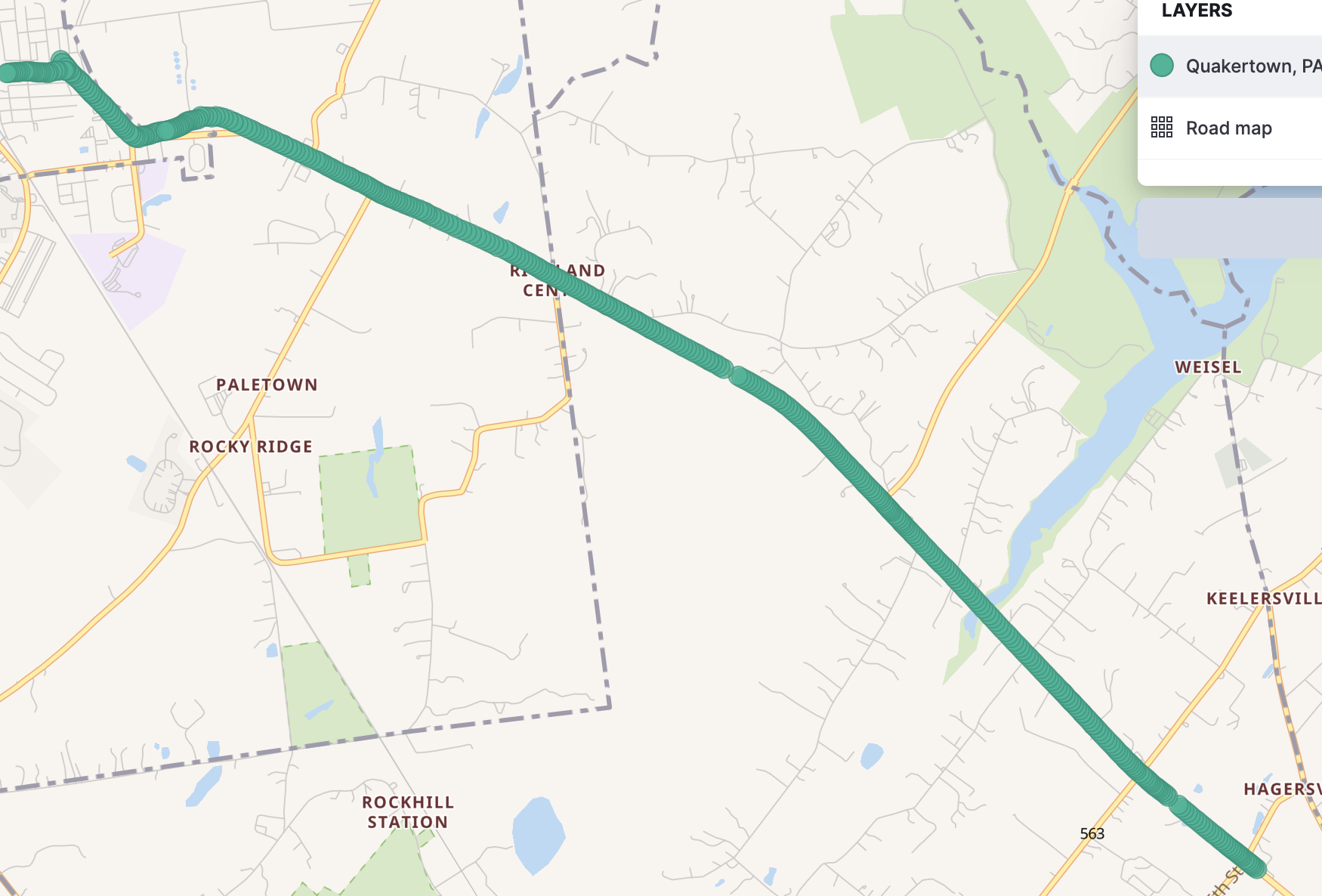
AT&T
RSRP
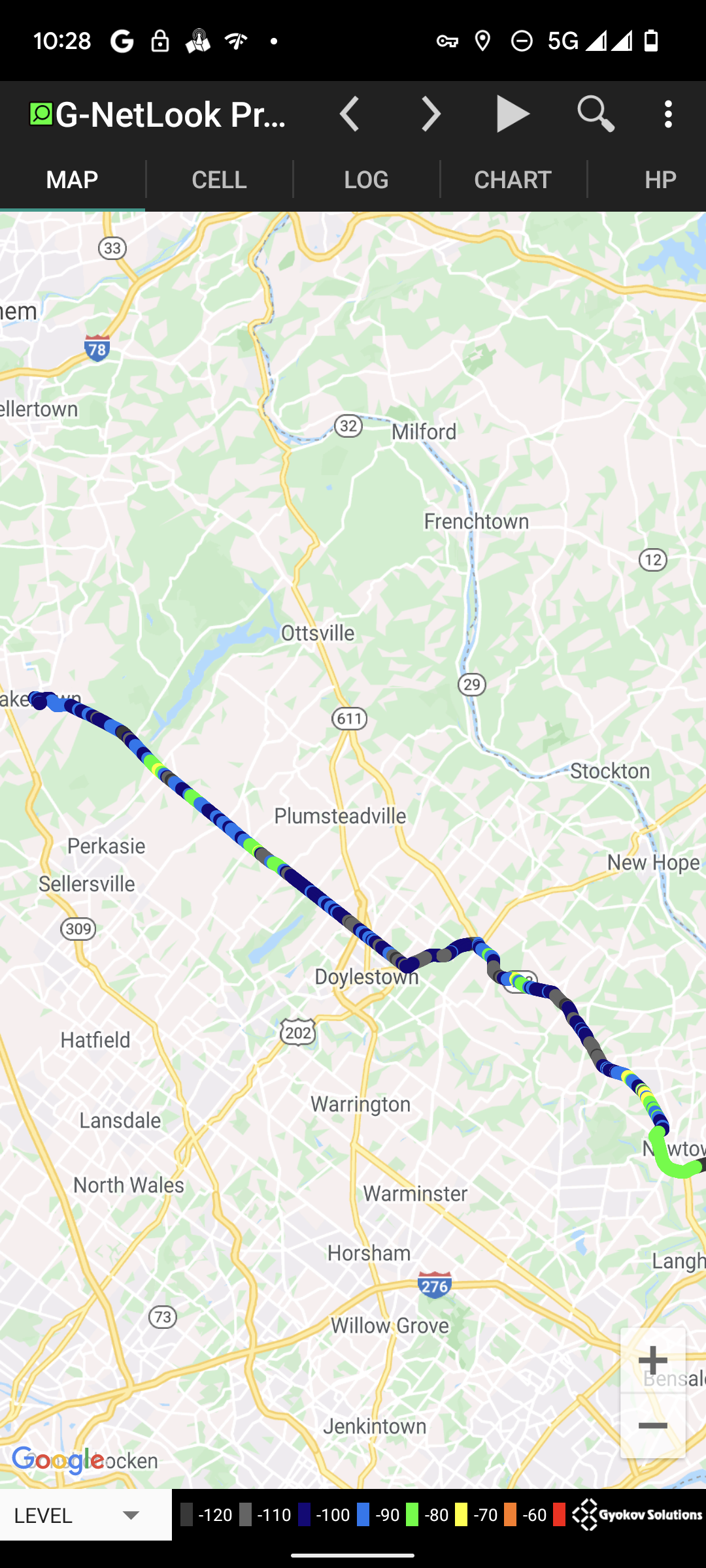
RSRQ
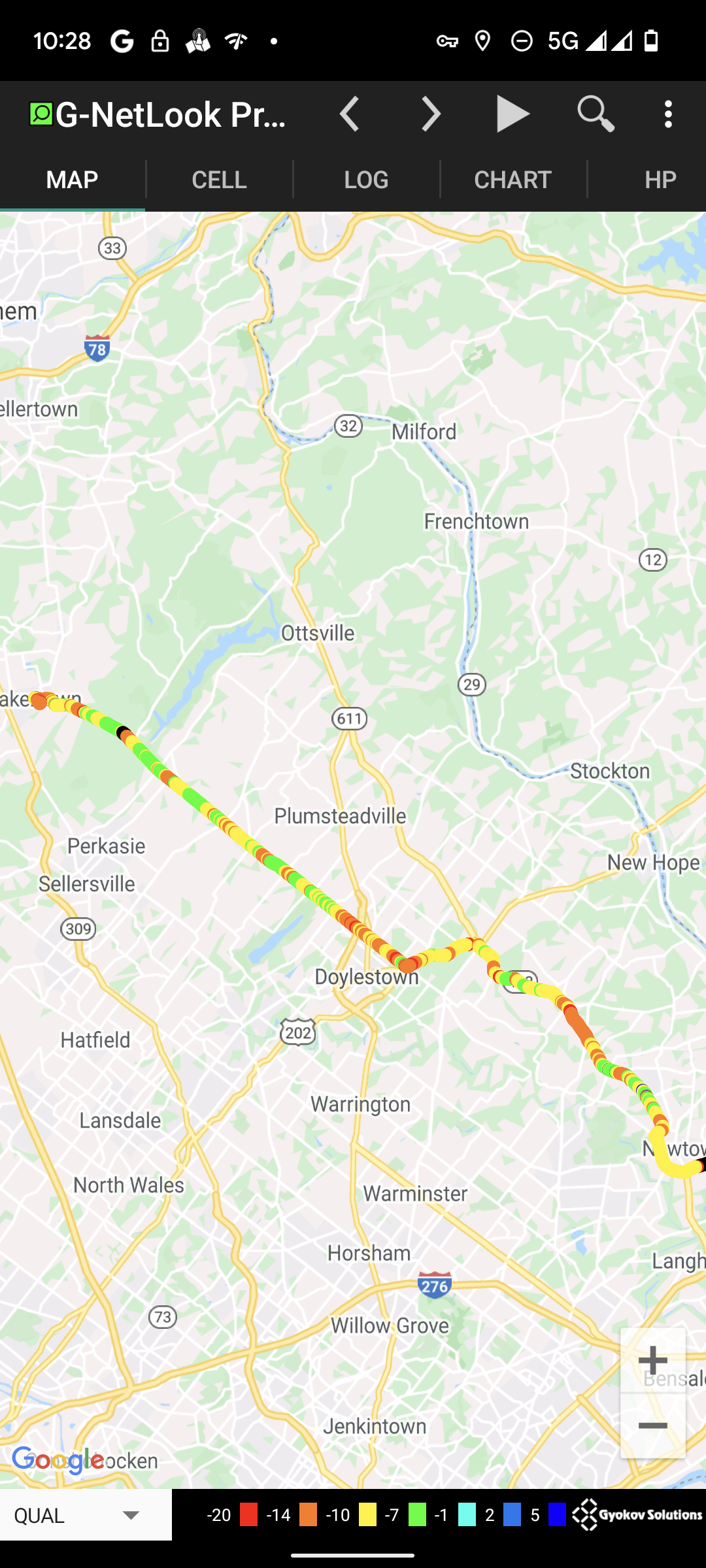
Bands
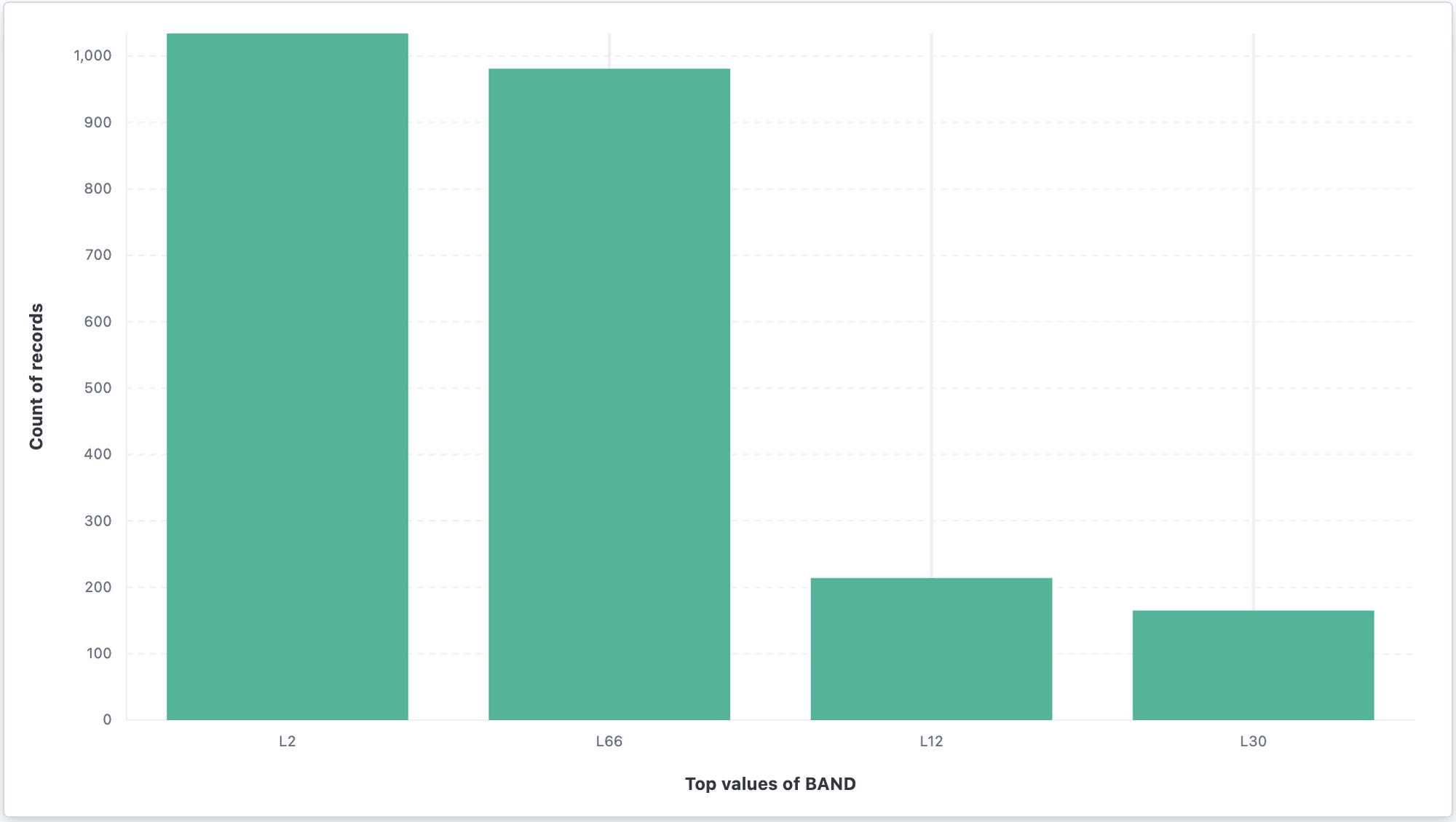
Bandwidth
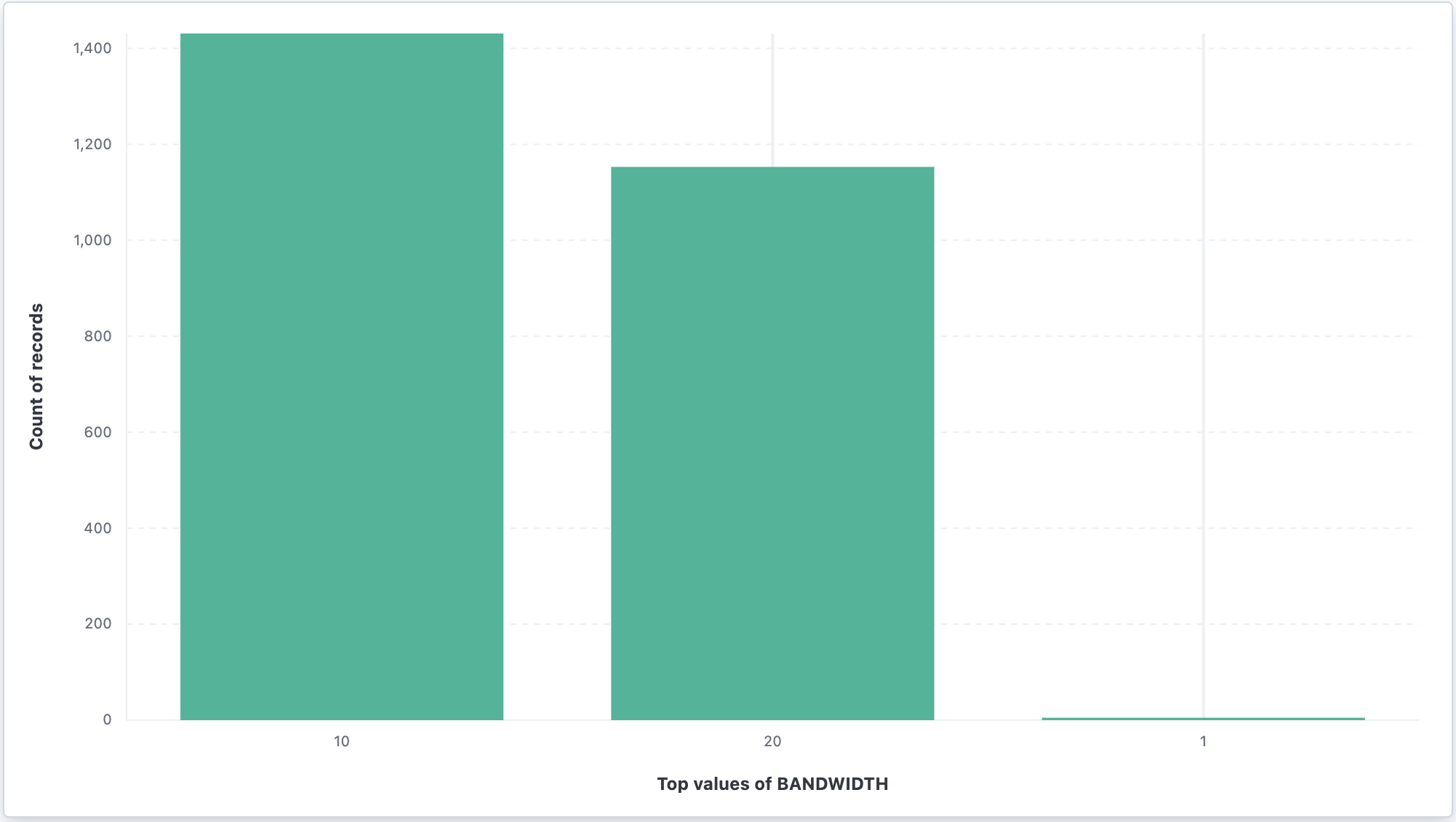
5G Coverage (25% of Time)
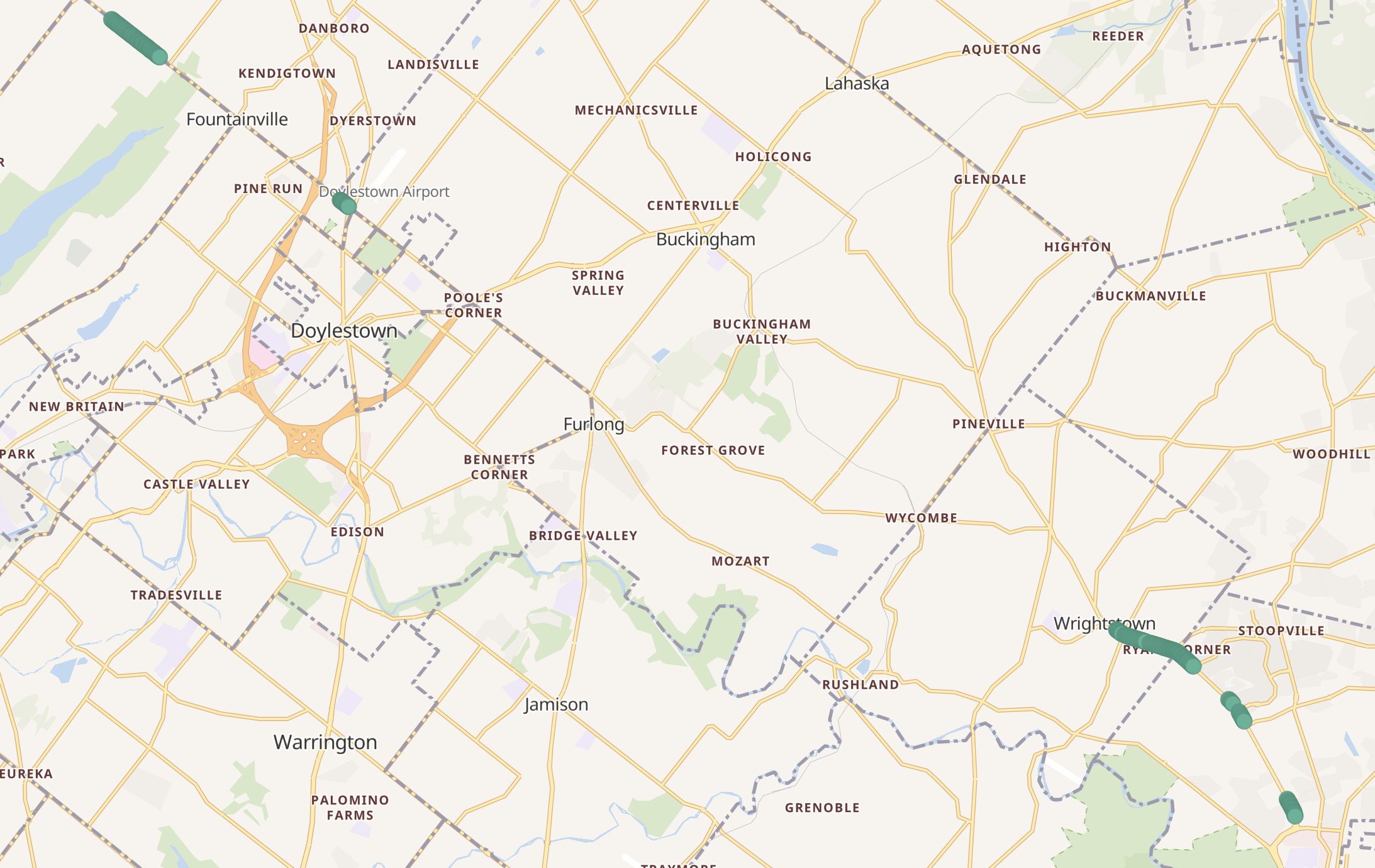
Other Metrics
Average RSRQ: -9.583
Average RSRP: -97.791
Unique Nodes: 17
Unique Cells: 40
Average Ping Time : Approximately 50ms
Average Download Rate: 87.779 Mbps
CA Used: 0 %
Number of Points Where RSRQ <= -20: 0
Number of Points Where RSRP <= -122: 15
AT&T Synapsis
AT&T was very solid throughout the trip. On my way back, I was running NPERF tests every few minutes and this averaged around 87 Mbps. I rarely hit a spot where download speeds were slow. Also, the streaming and web browsing tests I did were consistently good. No real findings here.
T-Mobile
RSRP


Bands
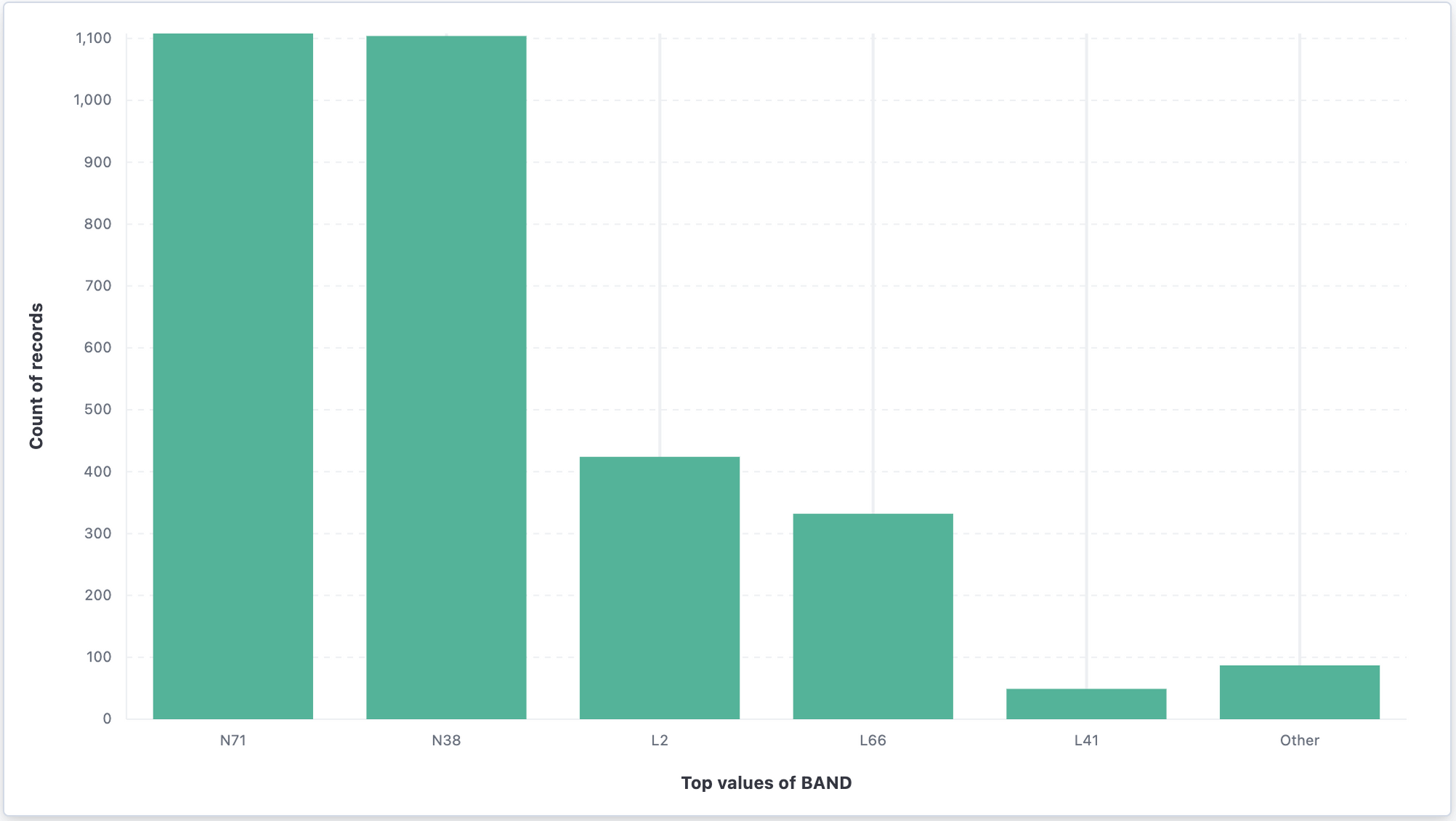
Bandwidth (I would say an average of 50 Mhz in most cases in various combinations/aggregations)

5G Coverage (Approximately 50% of Time)
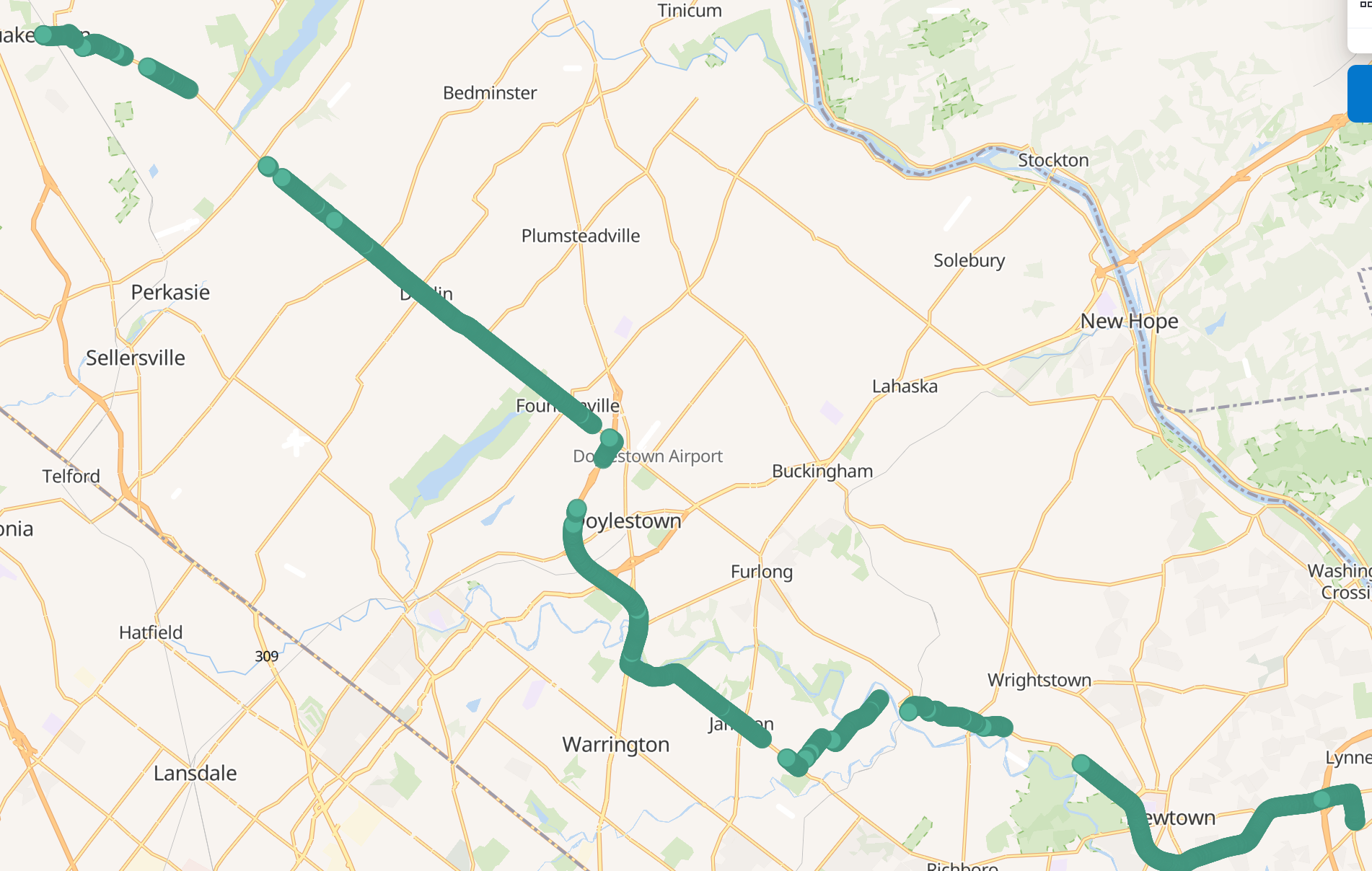
Average RSRQ: =6.898
Average RSRP: -101.56
Unique Nodes: 38 (A lot of N41/N71 sites I would think)
Unique Cells: 54
Average Ping Time : Approximately 50ms
Average Download Rate: 206.797 Mbps
CA Used: Approximately 99.2 % of the time
Number of Points Where RSRQ <= -20: 5
Number of Points Where RSRP <= -122: 40
I'm still interpreting some of the results I'm seeing with T-Mobile. The number of plots of RSRP <= -122 (45) seems high based on the one map that I pasted above. This fact is what leads me to some of the statements I made below in relation to having a higher bandwidth with lower RSRP (while maintaining good RSRQ values) may be true.
The RSRQ of T-Mobile is very good nonetheless (I attribute this to the amount of bandwidth available). The download speeds of T-Mobile are still the best and was very consistent throughout this trip.
Some Investigation Needed Based on these Statements (Not sure How True These Statements Are)
It appears that the RSRP value can go a little lower (weaker) in areas that have less congestion. In this same sense, having more available bandwidth may help keep quality/RSRQ better even when signals dip below -115 to -120 RSRP and helps contribute to a more useable signal.
Another statement that lingers in my mind is that a site/node may have a higher noise floor when it is congested (more noise). This noise floor would understandably be lower (less noise) if there was less usage (as compared to the full available bandwidth). This may be why a weaker signal can work in certain situations where it wouldn't work in others.
Also, the lower bands (for example 71 and 5) may help keep a better RSRQ when the RSRP gets weaker.